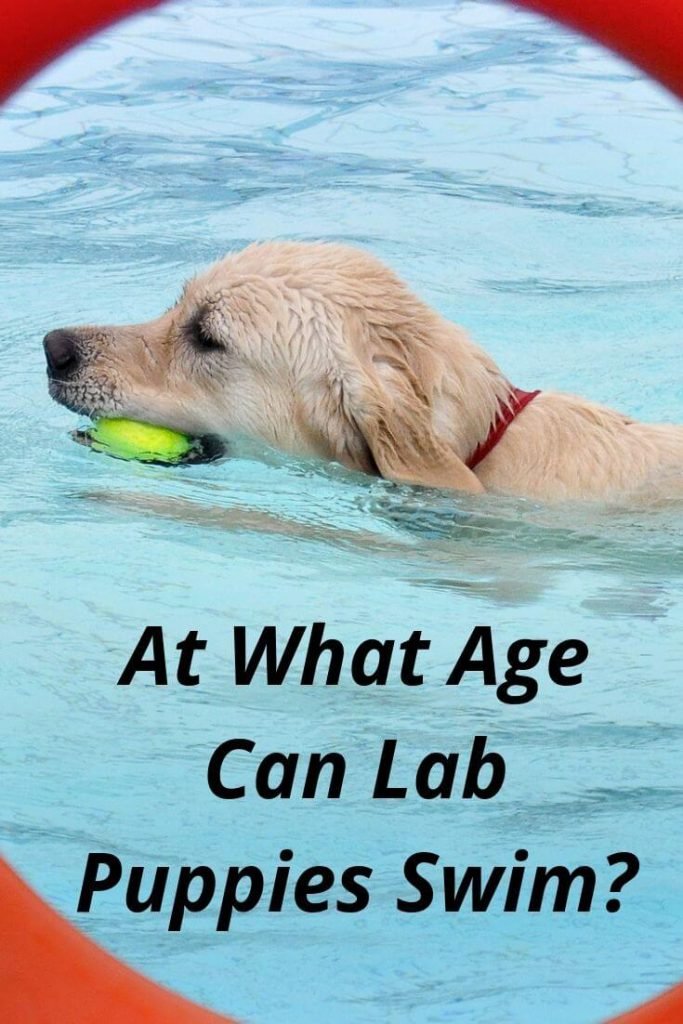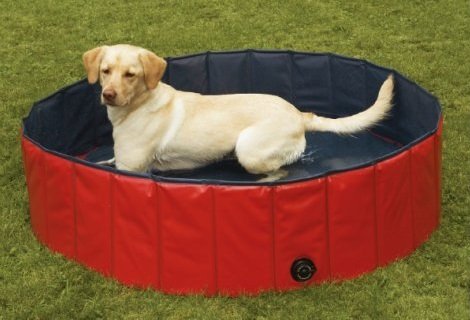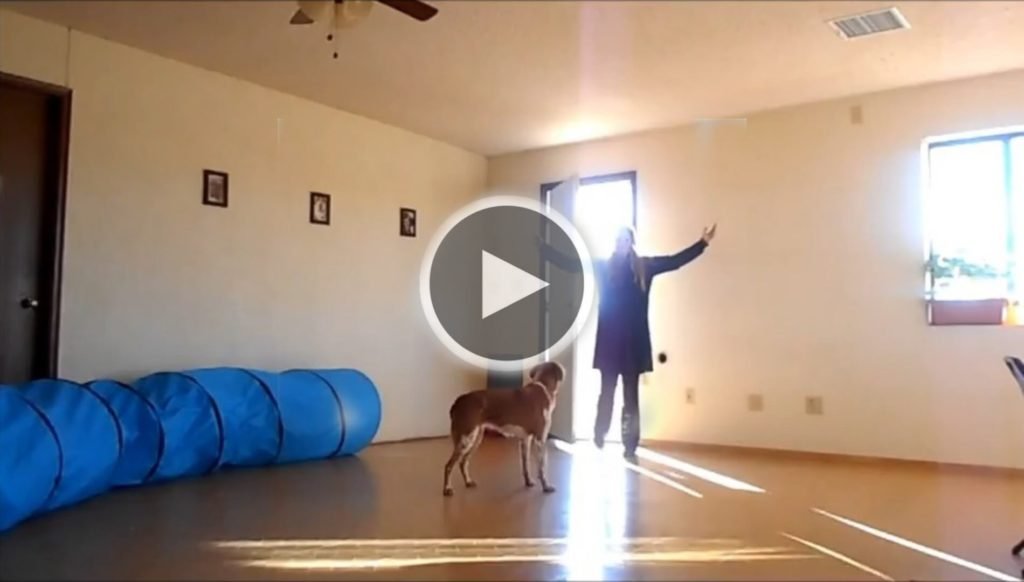Many people consider Labs and swimming a great combination, Is it? or is it not?
Labradors have a great affinity with water and activities like swimming. So at what age can Lab puppies swim? Can Labradors swim naturally? Do Labs like to swim?. We have covered all these questions for you in the below article. Have a look.
At what age can Lab puppies swim?
Some people say 8 weeks, some say 12 weeks and some say 3 months. There are a lot of conflicting opinions regarding the age when your Labrador puppies can start swimming.
Many people consider swimming and fondness of water to be present in the Lab’s DNA itself. Anyone would think like this, as these Labradors are historically linked with the fisherman and icy waters of Newfoundland.
Many people even think that Lab puppies can swim at any young age and they keep asking me whether their puppies can swim when they are one month old.

There are various factors to consider before determining your Labrador puppy swimming age. Where is your puppy going to swim? Is it near a public pool, or a lake or a pond or a beach?
For example, it is probably safe to allow a 3-month-old puppy into a small pond, but it is not safe to allow him in the beach waters. Look at the points below and you will understand the age and time to introduce your Lab puppy to swimming waters.
1. Habituate swimming to your Labrador puppy slowly. Initially, it is always better to make the puppy acquainted with water either in your bathtub or your personal pool. You can start this when your puppy reaches 3 months old. Remember the age “3 months old”.
2. You have to remember that your Lab needs certain physical strength in its legs in order to swim effortlessly. Allow your little Lab to grow until 3 months and then you can introduce him to swimming.
Some people tell me that their Labrador puppies started swimming when they are just 8 weeks old. “Puppies could swim and this doesn’t mean they should swim”.
3. Do not take him into public pools until he is fully vaccinated as there is a risk of deadly diseases for your little puppy. Take him into public water bodies only after he finishes his set of vaccinations.
4. Some puppies take time during the exploration of water, hence remember not to force him in any way to get into the water. Forcing your Lab puppy to get into water does not work and your puppy may develop fear and aversion towards the water.
One of my dog Simba was very scared of water and he never preferred to play with water during its lifetime. I don’t remember what created that fear in him, but he always stayed away from water.
5. You can take your puppy to larger water bodies like beach waters when it reaches 6 months of age. My little puppy went into the beach waters when he is around 6 months of age and he enjoyed its day fully. Taking him at a younger age might scare him of the waves and it is even difficult for the little puppy to balance himself in the beach water.

Labrador swimming- Complete guide
Labradors are perfect swimmers which used to retrieve fish and nets from the cold icy waters of the North Atlantic. Have you seen its thick, dense water-resistant coat? It makes them waterproof. Observe their webbed feet, which help them to swim.
But I have never thought that i should teach a Lab puppy to swim until i met a dog who’s scared of water.
Let us consider some basic questions to understand Labrador swimming.
Can Labradors swim naturally?
Labradors have the innate ability to swim, but that does not mean they can swim like fish. This is especially true with respect to puppies. Their body structure and genetics assist them in paddling in the water.
Labradors love swimming and are good swimmers but it does not mean they can swim for any duration of time and anywhere. Hence it is important to remember that they are dogs and they have their limitations.
So, do Labs like to swim? Yes. But not every Labrador likes to swim. As i told you my dog Simba hates water and he is really scared of it. The reason why some Labs are scared of water is that they are introduced to water in an inappropriate way. Their first experience of water might have been scary and disturbing for them.
How to teach a Lab to swim?
Even though some Lab puppies begin to swim on their own, some Labs who cannot do it on their own, some Labs which are scared of water, and Labs which are small puppies need to be taught to swim.
1. Firstly introduce your Lab puppy to water splashes and small house pools at a young age so that he gets acquainted with water. If your little pup is scared, do not force him. Give him sufficient time to get adjusted to the water.
You can buy a mini Labrador swimming pool in your house to habituate swimming for your little one. You can Buy it here.
2. Whenever you take him to a nearby pool for swimming, keep your palm under his belly or his chest and allow him to move its legs to swim. You can help him like this until he becomes a confident swimmer.
3. Give your puppy a life vest if he is not very comfortable with water. It keeps your puppy buoyant and makes him less tense. 4. Go into the water along with your pup. As your puppy feels safer with you, it feels even more comfortable while swimming.
4. Go into the water along with your pup. As your puppy feels safer with you, it feels even more comfortable while swimming.
5. Don’t introduce him to beach waters when he is too young. Go for a casual walk along the beach with a leash around your puppy and let him feel the waves. Let him get habituated to the wave movements so that he won’t panic.
6. Use positive reinforcement techniques such as giving encouragement, treats and rewards while playing in the water. You can play fetch games in the water which your puppy may like.
Labrador swimming safety precautions
Looking at your Lab puppy swimming can be delightful and exciting, but there are some precautions you need to take while taking out your puppy for swimming. Have a look.
1. Never leave your dog alone. Even though Labs can swim sometimes it might be difficult to resist against currents in oceans and rivers. Always keep an eye on your dog as a precautionary measure.
2. It is safe to buy him a good safety vest. We cannot expect when your dog might encounter a risky situation that makes him difficult to swim. Wearing a life jacket at least ensures that your dog doesn’t drown.
3. Do not overexert your dog while swimming. Sometimes he can manage to go out far from the shore but could not come back as he gets tired. Be careful especially when your Labrador is in its puppy stage as puppies get tired more easily.
4. Always get into a swimming pool that has a sloped ground or steps so that your dog can come out easily. Swimming pools without steps and sloped ground can be risky for dogs.
5. Be careful while swimming in unknown waters. Unknown waters have a risk of dangerous snake bites.
Attention:
Lack of proper training in the initial stages can build up various anxiety issues and fears in your dog. This can make your dog afraid of any new activity including swimming too.
When you want your Lab to enjoy swimming, it could be a phobia for him.
Take proper steps of training your dog well to avoid these issues. Watch this amazing video for a one-stop solution for your dog’s behaviour problems.

